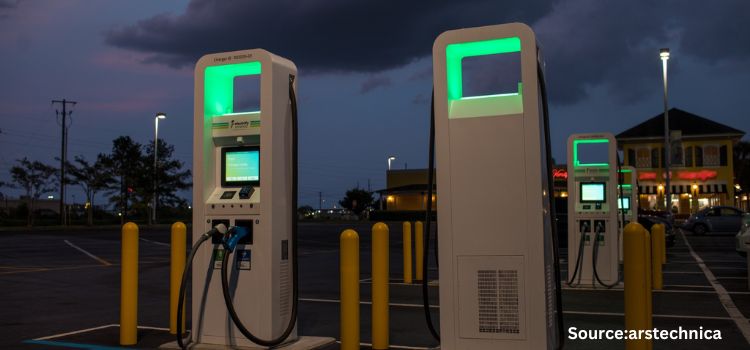
Autonomous Vehicle Market by Type (Semi-Autonomous and Fully-Autonomous (Level 4/5), by Propulsion Type (Internal Combustion Engine (ICE), Battery Electric Vehicles (BEV), Hybrid Electric Vehicles (HEV), Plug-in Hybrid Electric Vehicle (PHEV), and Fuel Cell Electric Vehicle (FCEV)), by Mobility (Personal Mobility and Shared Mobility), and by Component (Ultrasonic, Lidar, Radar, Vision System, GPS Receiver, and Others)– Global Opportunity Analysis and Industry Forecast, 2023–2030
Industry: Automotive & Transportation | Publish Date: 15-Feb-2025 | No of Pages: 442 | No. of Tables: 298 | No. of Figures: 243 | Format: PDF | Report Code : AT330
US Tariff Impact on Autonomous Vehicle Market
Trump Tariffs Are Reshaping Global Business
Market Definition
The global Autonomous Vehicle Market was valued at USD 104.87 billion in 2022 and is predicted to reach USD 614.88 billion by 2030, growing at a CAGR of 24.9% from 2023 to 2030. Driverless or autonomous vehicles operate without human intervention due to their ability to sense their surroundings via the internet. In these vehicles, sensors, actuators, complex algorithms, machine learning systems, and powerful processors work together to execute smooth driving.
For sensing traffic and roads, these vehicles generally use artificial intelligence (AI) software, light detection & ranging (LiDAR), radio detection and ranging (RADAR), and cameras. Compared to conventional vehicles, these vehicles are more fuel-efficient and safer. There are different levels of autonomy for AVs, ranging from semi-autonomous ones that require driver assistance to fully autonomous ones.
The advantages of these vehicles over conventional vehicles include improved safety, increased fuel efficiency, easy maneuverability, and low emissions. It is possible to further automate AVs to Level 3 through Level 5 using trajectory control and motion planning.
Advancements in Autonomous Technology and Demand for Safety Features
In recent years, numerous advancements have been made to improve situational awareness and establish an early warning mechanism for identifying dangers and planning. One of the significant technological trends is the integration of radars and cameras as backups for components in the event of a malfunction of the other components within the system. Radar sensors and multipurpose cameras work in perfect harmony regardless of weather conditions.
Furthermore, the LED flicker mitigation mode implemented in the hardware allows the capture of flickering light sources, such as pulsed LED lights from traffic signs, traffic lights, turns, and brake lights, without oversaturating the image. For instance, in October 2021, Lucid launched the Dream Drive, an advanced driver-assistance system for AVs. More than 30 features are available through this hardware, including collision avoidance, highway assist, traffic jam assist, and auto park via a user-friendly interface.
Several Strict Rules and Regulations Regarding the Safety of AVs
Consumer awareness of vehicle safety ratings and reduced costs due to the extensive use of cameras and radars drive the demand for advanced driver assistance systems (ADAS). In AVs, OEMs are incorporating ADAS solutions to achieve high safety ratings, which ultimately drive sales. OEMs either standardize safety systems across models or offer them as optional features.
There are strict safety standards and regulations governing the AV market that ensure the safety of passengers and drivers. Several countries, including the US and European Union, have enacted laws and regulations to install vehicle safety systems, including loss damage waiver (LDW) and tire pressure monitoring systems (TPMS), within a specific period.
In the US, TPMS is mandatory in all vehicles manufactured after September 2007. In addition, in the European Union, TPMS is mandatory for all new passenger vehicles manufactured after November 1, 2012. From November 1, 2014, all new passenger vehicles sold in the European Union should be fitted with TPMS. The above-mentioned factors drive the growth of the AV market during the forecast period.
Scarcity of Semiconductor Chips Across the World
Approximately USD 200 billion was lost to the global automotive industry due to semiconductor chip shortages in 2021. As a result of these shortages, several original equipment manufacturers (OEMs) have been forced to slow down production, while some have even halted production activities and extended waiting times for popular, feature-rich, and high-end passenger vehicles.
The scarcity of semiconductors has caused considerable losses to the global automotive industry, as they are used in various components such as automotive sensing, safety features, power management, displaying information, and vehicle control.
As Congress considered various proposals to support domestic semiconductor production, the effect of semiconductor shortages on automotive supply chains drew attention. According to KPMG International’s 2021 annual survey of automotive executives, more than 50% of them expressed concerns about price volatility and the availability of semiconductors and commodities.
Rising Demand for Electric Vehicles (EVs)
The global electric vehicle market size is projected to grow from 8,151 thousand units in 2022 to 39,208 thousand units by 2030. EVs are becoming increasingly popular due to high fossil fuel prices and growing awareness of environmental pollution. These factors are expected to create ample opportunities for the AV market in the coming years. Factors such as increased demand for high-performance & low-emission vehicles, stringent government rules & regulations toward vehicle emission, reduction in the cost of electric vehicle batteries, and surge in fuel costs supplement the growth of the electric vehicle market, which further boosts the AV market growth.
For instance, in the Paris Agreement (COP21), the EU committed to achieving its 20% greenhouse gas reduction target in 2020 for the second phase of the Kyoto Protocol but could reach only 13.3% in 2020. Furthermore, several automotive manufacturers such as Volkswagen, Tesla, and Peterbilt are engaged in R&D activities for the development of EVs, further boosting the market growth. For instance, in April 2021, Volkswagen unveiled its 7-seater EV ID.6 Crozz and ID.6 X, produced along with FAW and SAIC in China. It is available in two battery versions, 58 kWh and 77 kWh, and comes in four powertrain configurations. In January 2020, Peterbilt Motors Company and Dana Incorporated announced their collaboration to develop an electric powertrain for Peterbilt Model 220EV battery Evs, which has a range of 100–200 miles. Using the vehicle’s DC fast-charging system, the high-energy-density battery packs can be charged within an hour, making 220EV ideal for local pickup and delivery as well as for short regional haul operations.
Geographical Analysis
Asia Pacific holds the major share of the autonomous vehicle market and is expected to continue its dominance during the forecast period. A number of factors contribute to this, including increased vehicle automation and government initiatives mandating driver assistance systems to reduce traffic fatalities. Higher adoption of ADAS systems in small cars and technological advancements also contribute to the growth of the AV market.
On the other hand, North America is expected to show steady growth in its autonomous vehicle market. This is attributed to factors such as growing demand for passenger cars, commercial vehicles, and two-wheelers in the region, investments by OEMs to establish their presence in North America, emission regulations, developments in the electric vehicle market, and market shares of both original equipment manufacturers (OEMs) and original equipment suppliers (OESs).
Competitive Landscape
The autonomous vehicle market is dominated by various market players, which include Tesla Inc., Waymo LLC, Cruise LLC, Zoox, Inc., Mercedes-Benz Group AG, AB Volvo, BMW AG, Honda Motor Co., Ltd., Pony AI Inc., May Mobility, Karsan Otomotiv, Yutong Bus Co., Ltd., AutoX, Inc., Motional, Inc., WeRide Inc. In order to maintain their dominance in the autonomous vehicle market, these market players are adopting various strategies, such as business expansion and collaboration across different regions. For instance, in September 2021, the venture capital arm of General Motors Co. announced an investment in a start-up, Oculiim, a U.S.-based company that develops software for radar sensors used in self-driving cars. This investment will allow GM to use Oculli’s low-cost software to boost the resolution of radars and scale up its partially automated and fully self-driving vehicles.
Moreover, in September 2021, Mercedes-Benz announced that it would integrate its VISION AVTR concept vehicle with the first brain-computer interface (BCI) approaches. The biometric interaction with the vehicle is complemented by a direct connection to the human brain. Following a short calibration procedure, a BCI device attached to the user’s head analyzes the measured brain waves and triggers a defined function. BCI devices record brain activity and establish a direct connection with vehicles after one minute of calibration.
The visual stimuli on a dashboard trigger brain activity. Using biometrics, a new level of interaction is possible between man, machine, and nature in the autonomous concept vehicle. Furthermore, in September 2021, Honda Motor Co., Ltd. announced to begin testing a program for AVs, which marks an essential step toward flourishing the autonomous vehicle mobility service (MaaS) business in Japan. Honda plans to launch this business in collaboration with Cruise and General Motors.
Autonomous Vehicle Market Key Segments
By Type
-
Semi-Autonomous
-
Level 1
-
Level 2
-
Level 3
-
-
Fully-Autonomous (Level 4/5)
By Propulsion Type
-
Internal Combustion Engine (ICE)
-
Battery Electric Vehicles (BEV)
-
Hybrid Electric Vehicles (HEV)
-
Plug-in Hybrid Electric Vehicle (PHEV)
-
Fuel Cell Electric Vehicle (FCEV)
By Mobility
-
Personal Mobility
-
Hatchback
-
Coupe & Sports Car
-
Sedan
-
SUV
-
Others
-
-
Shared Mobility
-
Robo Taxi
-
Self-Driving Bus
-
Ride Share
-
Self-Driving Vans & Trucks
-
Ride Hail
-
By Component
-
Ultrasonic
-
LiDAR
-
Radar
-
Vision System
-
GPS Receiver
-
Others
By Geography
-
North America
-
US
-
Canada
-
Mexico
-
-
Europe
-
UK
-
Germany
-
France
-
Spain
-
Italy
-
Netherlands
-
Denmark
-
Finland
-
Norway
-
Sweden
-
Russia
-
Rest of Europe
-
-
Asia-Pacific
-
China
-
Japan
-
India
-
Australia
-
South Korea
-
Thailand
-
Singapore
-
Rest of Asia-Pacific
-
-
Rest of World
-
Latin America
-
Middle East
-
Africa
-
Key Players
-
Tesla Inc.
-
Waymo LLC
-
Cruise LLC
-
Zoox, Inc.
-
Mercedes-Benz Group AG
-
AB Volvo
-
BMW AG
-
Honda Motor Co., Ltd.
-
Pony AI Inc.
-
May Mobility
-
Karsan Otomotiv
-
Yutong Bus Co., Ltd.
-
AutoX, Inc.
-
Motional, Inc.
-
WeRide Inc.
REPORT SCOPE AND SEGMENTATION:
|
Parameters |
Details |
|
Market Size in 2022 |
USD 104.87 Billion |
|
Revenue Forecast in 2030 |
USD 614.88 Billion |
|
Growth Rate |
CAGR of 24.9% from 2022 to 2030 |
|
Analysis Period |
2022–2030 |
|
Base Year Considered |
2022 |
|
Forecast Period |
2022–2030 |
|
Market Size Estimation |
Billion (USD) |
|
Growth Factors |
Advancements in autonomous technology and demand for safety features Several stringent rules and regulations regarding the safety of AVs |
|
Countries Covered |
26 |
|
Companies Profiled |
10 |
|
Market Share |
Available for 10 companies |
|
Customization Scope |
Free customization (equivalent up to 80 analysts working hours) after purchase. Addition or alteration to country, regional & segment scope. |
|
Pricing and Purchase Options |
Avail customized purchase options to meet your exact research needs. |

















 Speak to Our Analyst
Speak to Our Analyst





















